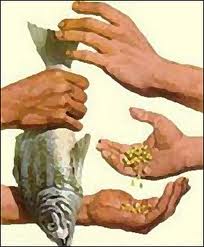Adjective Order
Adjective Order is one of those obscure English grammar
rules that nobody told us about in college. A summary on how it works:
Look at these two squares.
How would you describe the objects? The image on the left
you’d probably describe as a big, red square, because that’s what it is, right?
Now, what if you describe it as red, big square? Does that sound right to you? It
sounds quite a bit off, doesn’t it?
It’s because there is a specific order of describing things
that for some reason English speakers have established as the proper way.
When you are describing a noun using two or more adjectives,
the adjectives are usually in a particular order. Opinions come first, e.g.
gorgeous, ugly, etc., before factual ones.
There are several levels of order. The Cambridge
Dictionaries Online lists ten:
Order relating to examples
1 opinion unusual, lovely, beautiful
2 size big,
small, tall
3 physical quality thin, rough, untidy
4 shape round, square, rectangular
5 age young,
old, youthful
6 color blue,
red, pink
7 origin Dutch,
Japanese, Turkish
8 material metal, wood, plastic
9 type general-purpose,
four-sided, U-shaped
10 purpose cleaning, hammering, cooking
EXAMPLES
She was wearing a beautiful new red dress.
The countertop has ten small round plastic bottles.
He bought some interesting Russian iron ornaments at the
flea market.
She is selling her beat-up 10-year-old German car.
It happened during a miserable scorching afternoon.\
An obscure rule, but I think the majority of us follow this unconsciously
without realizing that there is actually such a rule.
Protip: Just remember OpShACOM (Opinion, Shape,
Age, Color, Origin, Material).





Comments
Post a Comment
So, what do you think? Post it here: